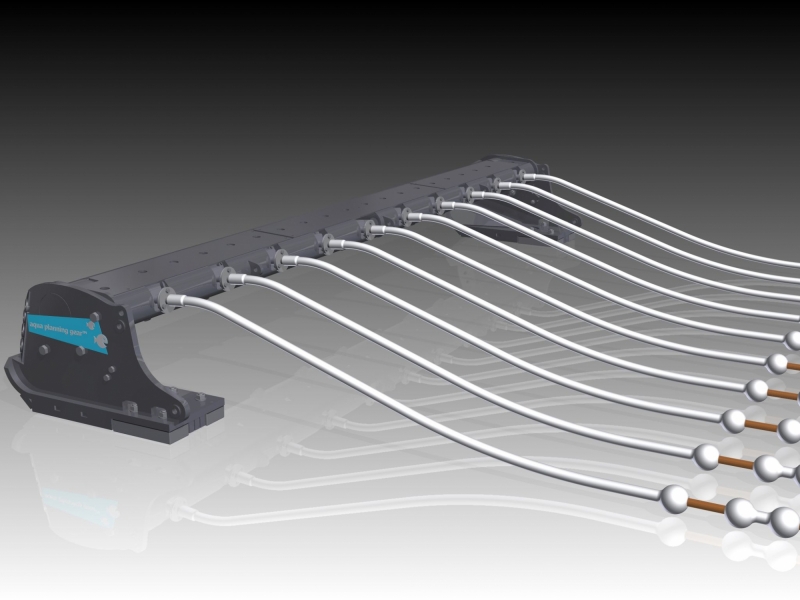Pulse Fishing for Shrimps
Pulse Fishing for Shrimps
Additionally, Delmeco had research done into the application of pulse technology on shrimps. At the Flemish coast, shrimp fishing with electrical pulse has already been in use for several years. The system in use there was developed especially for shrimp fishing. Several Delmeco clients fish for shrimp for a part of the year and flatfish for the rest of the year. A demand arose for rigging that could be deployed for pulse fishing for shrimp, sole and plaice.
Research by research institute ILVO from Oostende showed what pulse is required for shrimp fishing. Previous ILVO research proved that a so-called square direct current pulse with a repeat frequency of 5Hz and a pulse time ranging from 0.25 to 0.5ms which induces a field strength of about 30V/m on the seabed in between the electrodes, gives the best result when trying to have common shrimps jump out of their hiding places. A short high peak voltage (‘sting’) with steep rising and falling sides is crucial in coaxing the desired shrimp response (= simultaneous and upwards jump). During the exposition of 0.4s to this pulse with repeat frequency 5Hz, a shrimp receives about two pulses. It turns out that this is sufficient to scare shrimps away off the seabed in such a way that they swim upwards so that they can easily reach a height of 50 cm above the seabed.
Delmeco had research done into whether shrimp fishing is possible with the Delmeco system. To this end, research institute ILVO from Oostende has conducted various experiments. The results were very encouraging. It appears that it is possible to configure a pulse-fishing system for fishing for both sole and shrimp with the existing cable and regular beam and electrodes. The cable and pulse field can both generate the pulse required to make shrimp jump. The electronic controls which have been adapted for shrimp fishing and the modules can easily generate the optimal shrimp pulse (as stated by ILVO). Furthermore, the extra control options offer the possibility of testing other pulse parameters as well.
All measurements show that the adapted Delmeco OWIP delivers sufficient output voltage to generate a sufficiently high electrical field strength on the seabed for electrode distances of both 42cm and 84cm. (Bart Verschueren, Verslag Delmeco Garnalenpuls (Report Delmeco Shrimp Pulse), ILVO 2012).
Image: Observation of shrimps during and after pulse (photo: ILVO)


